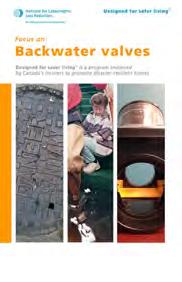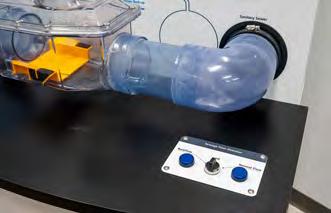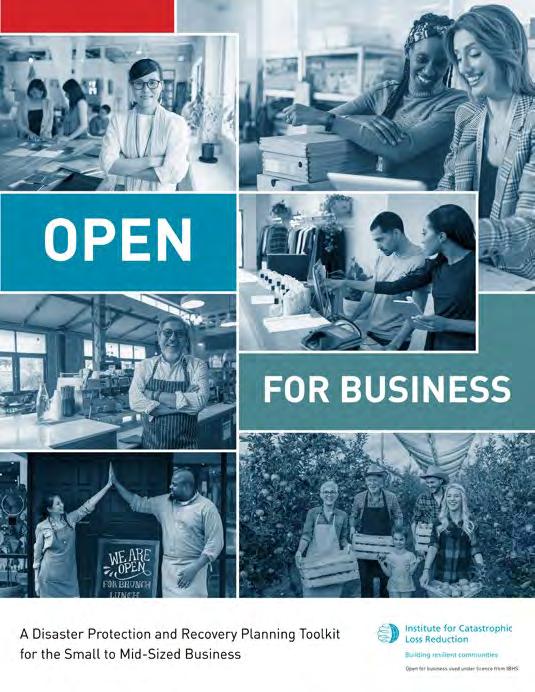ICLR RESOURCES FOR HOMEOWNERS, INSURERS, LOCAL GOVERNMENTS, BUSINESSES AND RESEARCHERS








Canadian property owners, insurers, governments and businesses are confronting one of the most important issues of our time – the alarming recent increase in damage to homes, businesses and infrastructure and the increase in societal disruption from extreme weather, and the potential for a large urban earthquake in the country. Communities large and small across Canada are now taking action to reduce the risk of basement flooding, wind, hail, earthquake and wildfire damage to property and disruption to business.
ICLR is a leader in working on strategies to involve property and business owners, governments and others in the management of natural hazards and has developed a range of resources that property owners, insurers, local governments, businesses and researchers can use to reduce the risk that damage and disruption from severe weather or a large urban earthquake is experienced.

Helping homeowners & insurers


Canadian insurers and reinsurers are on the front lines dealing with property damage claims from severe weather. Much of this damage is happening to single family homes and this has been the focus of much of ICLR’s research and outreach efforts in recent years. ICLR has invested great attention and resources into determining what damage is being experienced to Canadian homes and ways in which this damage can either be completely prevented or significantly mitigated.
ICLR has developed a wide range of both broad-based and specific advice to help insurers, local governments, homeowners and others reduce the impacts of severe weather and earthquakes on both people and property. Some of the actions we advise can be accomplished by homeowners in a weekend, while other advice is best addressed by professionals.




For more information, see here.
ICLR’s ‘Focus on’ titles get into details about sump pump systems, backwater valves, emergency generators and more.






Helping homeowners & insurers
ICLR’s Climate Resilience Centre at Western University showcases practical, cost-effective, consensus-based methods that insurers, home builders, homeowners and others can address to become resilient to climate disasters. Current displays address basement flooding, severe wind, and hail. Future displays will address wildfire and other hazards.


Climate Resilience Centre
For more information, see here

Hail damage has cost Canadian insurers almost $9 billion (2008 to 2021). ICLR’s HailSmart program was introduced to encourage homeowners to install an impact resilient (IR) roof, shelter their vehicle when a storm approaches and take other actions. The program also provides tips to businesses to reduce their risk of experiencing damage from hail.



Visit here to find out how to make your home, vehicles and business HailSmart.


Hail Purchase home with a steeper sloped roof as flatter roofs are more vulnerable to hail damage. Insured losses caused by just three Alberta hailstorms (2010, 2012 and 2014). Hail has affected every province and territory in Canada. The following provides info on key areas that may require attention in order to reduce the risk of hail damage to your home. $1.6 billion When re-roofing, install full roof underlayment, preferably self-adhering waterproofing underlayment (a.k.a. ice-and-water shield). Use roofing products with the Underwriters Laboratories UL 2218 Class impact resistance rating. Use brick cladding or cement board (a.k.a. fibre or Hardie Board) siding in place of aluminum or vinyl. Whenever possible, keep your vehicle parked under permanent cover (garage or carport). For skylights, windows and doors, use products made to withstand high debris impact such as those with ‘Miami-Dade’ impact resistance rating. See more at www.iclr.org Protect your home from An alternative to impact window safety films, which are readily available at most home renovation stores. PROGRAM
Helping homeowners & insurers
Several of Canada’s main population centres, including the Lower Mainland of BC and the Ottawa/Montreal/Quebec City corridor are at risk of large, powerful earthquakes. ICLR’s QuakeSmart program provides science and advice on minimizing property damage and disruption.




Earthquakes

The Institute’s free online Earthquake Risk by Postal Code tool helps homeowners and others determine if they live in an at-risk area.
For more information, see here

A strong quake near a big city could be the most destructive disaster this country could ever experience. The following provides info on key areas that may require attention in order to reduce the risk of earthquake damage to your home. See more at www.iclr.org Protect your home from The chance that Canada will be hit by a major earthquake sometime over the next 50 years. 1 in 4 Brace your hot water heater to prevent water and natural gas leaks. Secure large furniture, appliances and large flat screen TVs to walls to prevent them from toppling. Install a seismic natural gas shut-off valve on your gas meter. Strengthen cripple walls with plywood or strand board. Ensure the home is properly anchored to its foundation. Reinforce and brace masonry chimneys and ensure that beds are located away from a chimney should it collapse. Secure large pictures, mirrors and bulletin boards to studs using screws. Replace old windows with tempered glass or use protective window film.
Helping local governments
Local governments are confronting one of the most important issues of our time – the alarming recent increase in damage to Canadian homes from extreme weather. Communities large and small across the country are now taking action to reduce the risk of basement flooding, wind, hail and wildfire damage to property. ICLR is a leader in working with local governments on strategies to involve property owners in the management of natural hazards and has developed a range of free tools that municipalities can use to assist their residents in reducing the risk that they experience property damage and disruption.
ICLR’s RESILIENCE IN RECOVERY program for local governments


ICLR launched the Resilience in Recovery program to support build back better initiatives in Canadian communities following severe losses. Through this program, the Institute provides assistance to communities in an advisory capacity as they aim to build climate resilient homes and infrastructure following a major loss. We find scope for transformative improvement in community resilience to climate change during reconstruction of damaged homes, buildings and public infrastructure.
Celebrating local leadership
For more information, see here.
The Public Infrastructure Engineering Vulnerability Committee (PIEVC) Protocol was developed to assist engineers in factoring climate change impacts into plans for design, operation and maintenance of public infrastructure. The Protocol is free of charge for any application to public infrastructure in Canada and may also be used for private infrastructure.
Local governments are taking action to reduce the risk to Canadians from extreme weather. ICLR’s Cities adapt: Celebrating local leadership is a series of books extolling local governments adapting to climate change and building more resilient communities. The books include case studies describing local actions in Canada that are consistent with best practices for climate resilience as identified by the Institute.
THE PIEVC PROTOCOL CLIMATE RISK & VULNERABILITY ASSESSMENTS
Helping local governments
A collaboration between ICLR and the University of Guelph’s School of Engineering, the Basement Flood Protection Lab seeks to better understand technologies that are applied to control urban flood risk in Canada. This collaboration has specifically emphasized understanding of lot-level (household level) methods of managing flood risk. The primary intent is to better understand the reliability and efficacy of these measures.
IDF_CC is a web-based intensityduration-frequency tool to update and adapt local extreme rainfall statistics to climate change. The IDF_CC tool is pre-loaded with 898 Environment and Climate Change Canada rain stations. Users can select any rain station with 10 or more years of data and develop IDF curves based on historical data and curves adjusted to reflect climate change.

This microsite contains a protocol that will help plumbers/installers, plumbing inspectors and others to review the necessary steps involved in the installation of a backwater valve. This site provides information relevant to homes serviced by underground, public sewer systems, typically located in urban areas.



For more information, see here.

ICLR/University of
BASEMENT FLOOD PROTECTION LAB www. .com
Intensity-Duration-Frequency Climate Change Tool (IDFCC)
Guelph’s
Helping businesses
According to the US-based Insurance Institute for Business & Home Safety (IBHS), at least one in four small businesses impacted by a natural hazard never reopens. Protecting businesses from damage and disruption keeps people working and protects the local tax base, allowing for quicker recovery after disaster strikes.
The Open for Business program, used under licence from IBHS, not only reduces potential disaster losses but also assists businesses to reopen quickly should disaster strike.

Increasingly, Canadian businesses are being impacted by severe weather events, from physical damage, disruption to supply chains and other disruptions (like power outages). At the request of its insurance company members, ICLR has extended the reach of its research and outreach to include commercial loss risk reduction.


Mind your Business, ICLR’s new line of commercial loss risk reduction bulletins, offer advice on how business entities can take action to reduce the risk of damage and disruption from a range of hazards.




For more information, see here.

Helping researchers
ICLR has established itself as the national leader in the development of research and resources to reduce the risk of natural hazards to people and property in Canada. Materials generated by ICLR researchers and staff have been used widely by insurers, all levels of government and non-government groups engaged in disaster risk reduction and climate change adaptation.

ICLR’s Quick Response Program

ICLR’s Quick Response Program was designed to allow social, behavourial and economic scientists to quickly deploy to a disaster-affected area in the aftermath of a flood, extreme weather event or earthquake to collect perishable data. In addition to expanding academic knowledge, funded researchers submit brief reports that make preliminary analyses of recent events available to ICLR’s multidisciplinary network of researchers, practitioners, and educators as well as other interested parties. The program promotes innovation in disaster research by favoring students, new researchers, and novel areas of study.
YouTube channel
The Institute has more than 320 videos on its YouTube Channel on topics related to disaster risk reduction and climate change adaptation. New videos are added on a regular basis.



Friday Forum webinars

Since inception, ICLR has hosted more than 200 workshops under the Friday Forum banner on the latest disaster risk reduction science. At one time held in person in ICLR’s boardroom, in recent years the Institute first moved to a hybrid, then solely to an online Webinar format. The workshops have gained a reputation for being timely, interesting and thought-provoking.
For more information, see here.
Institute for Catastrophic Loss Reduction
Institut de prévention des sinistres catastrophiques
Toronto Office
30-34 Duncan Street
Toronto, Ontario
M5V 2C3
T 416-364-8677
www.iclr.org
www.PIEVC.ca
London Office
Western University
Amit Chakma Building, Suite 4405
1151 Richmond Street
London, Ontario, Canada
N6A 5B9
T 519-661-3234
F 519-661-4273
info@iclr.org
www.iclr.org

www.PIEVC.ca
facebook.com/instituteforcatastrophiclossreduction
twitter.com/iclrcanada • twitter.com/citiesadapt
youtube.com/iclrinfo
Search: Institute for Catastrophic Loss Reduction (ICLR)
www.basementfloodreduction.com
www.reduirelesinondationsdesous-sol.com
www.backwatervalveinstallation.com
























































